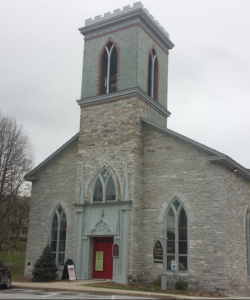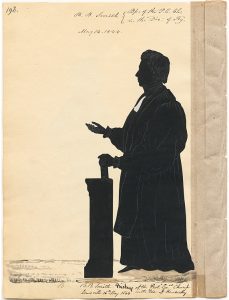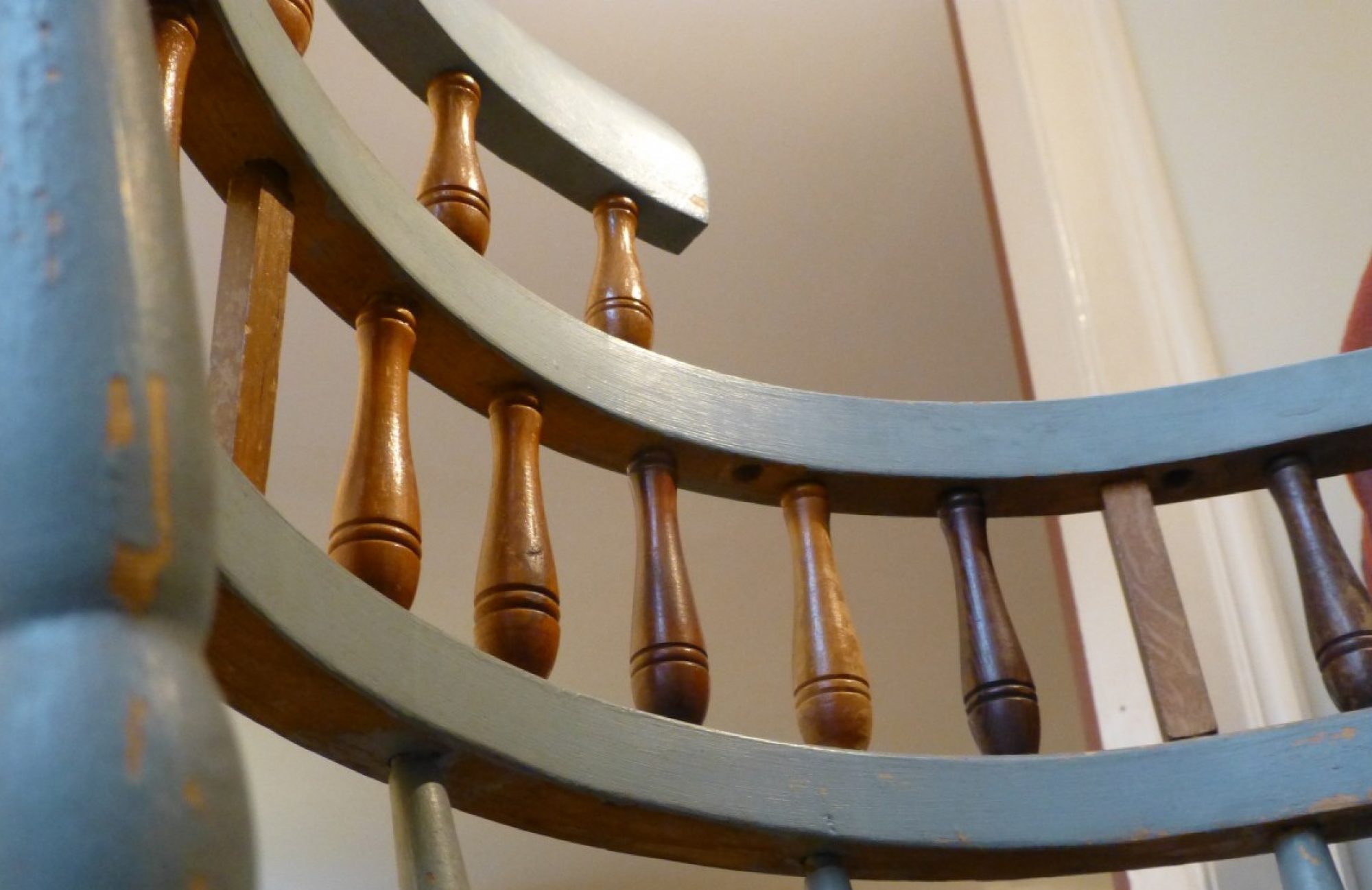According to Henry Sheldon’s log book, this specimen was taken from the “original chancel railing” of the “Episcopal Church built in Middlebury, VT in 1827 under the direction of Bishop B.B. Smith.”[1] Sheldon’s decision to include this relic in his chair makes sense because of his personal connection to the church. He was a member of the church for 63 years, and for 33 of those years he served as the organist.[2] Thus, although there is no record of how Sheldon acquired the spindle, we can hypothesize that Sheldon simply utilized his connection to the church and most likely took it himself when the chancel railing was removed in 1875. The church and the Sheldon museum were also closely connected. Sheldon often used the church to store materials from his museum, and positions on the board of the museum were primarily held by vestrymen from the church. Sheldon even went so far as to keep records of the church from 1879 to 1906, documenting its inner workings and business records.[3]

The Episcopal Church, also known as St. Stephen’s Episcopal Church, was originally founded on St. Stephen’s Day on December 26, 1811. However, it took years before the church found its footing in the community. The building was constructed primarily out of limestone and built on public land in the town’s center. To this day, the Revere Bell (purchased in 1835) and the Johnson tracker organ (purchased in 1875) remain in the church. Although they have undergone repairs and upgrades, the originals remain functional.[4] According to the church’s own account, the wealth and outreach of the church fluctuated, especially in the early years: “St. Stephen’s alternated between periods of prosperity and poverty, at one time supporting missions in two outlying towns, and at other times unable to afford the services of a rector.”[5] However, the church has survived throughout the years. Despite fires, renovations, and restorations, the church continues to function in its original location.

The church was consecrated in 1827 under the leadership of Benjamin Bosworth Smith, who then became the Presiding Bishop.[6] Born in Bristol, Rhode Island, Smith (1794-1884) attended Brown University and graduated in 1816. After serving as a rector at various churches along the east coast and moving around quite a bit, Smith became the rector of St. Stephen’s Church in Middlebury in 1823. He assumed several other roles throughout the rest of his life, including being consecrated as the first Bishop of Kentucky in 1832. He also served as superintendent of public construction for Kentucky from 1839 to 1842, and Presiding Bishop from 1868 to 1884.[7]
Currently, the church is led by Rector Dr. Susan E. McGarry, the 41st rector of St. Stephen’s. She began her tenure in 2012 after moving to Middlebury from Ann Arbor, Michigan.[8] Despite its ups and downs, the church continues to thrive and serve an active role in the Middlebury Community.
-David McDaniel ’19
Footnotes
[1] Henry Sheldon, “Log Book” (HL Sheldon papers vol. 19), Collection of the Henry Sheldon Museum, Middlebury, VT.
[2] “St. Stephen’s Church Records,” 1879-1906, Collection of the Henry Sheldon Museum, Middlebury VT.
[3] Ibid.
[4] “History,” St. Stephen’s Episcopal Church: http://www.ststephensmidd.org/about/history/. Accessed 20 January 2018.
[5] Ibid.
[6] Ibid.
[7] The Episcopal Church, “Smith, Benjamin Bosworth,” An Episcopal Dictionary of the Church: https://www.episcopalchurch.org/library/glossary/smith-benjamin-bosworth. Accessed 20 January 2018.
[8] “Rector,” St. Stephen’s Episcopal Church: http://www.ststephensmidd.org/about/rector/. Accessed 18 January 2018.
